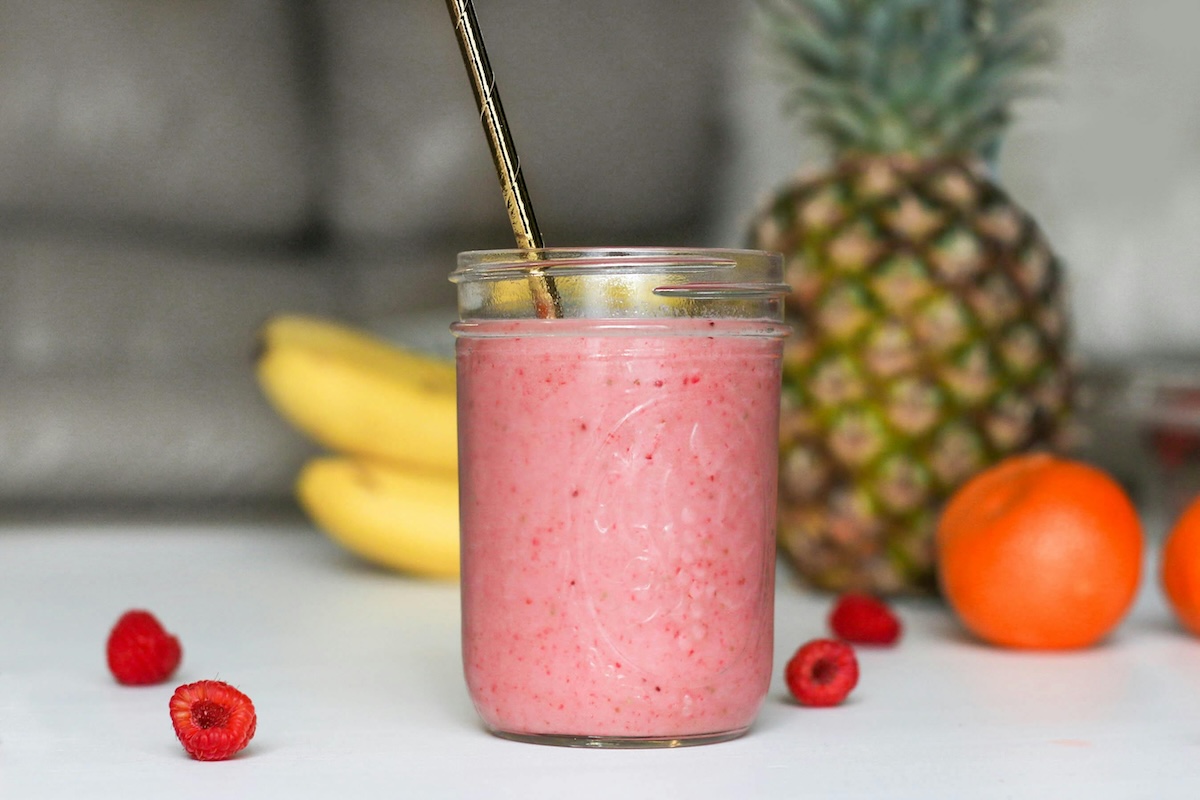Whether you are looking to gain solely muscle or weight in general, it can be difficult. As a trainer and nutritionist, I get questions all the time about how to put on size in an efficient manner. While there are methods like dirty bulking, I wouldn’t recommend it because it will end up doing more harm than good for your health.
But don’t worry — we have come up with a list of seven essential tips on how to gain weight to make your journey that much easier. Let’s dive in!
Increase your caloric intake

To gain weight, your body must consistently consume more calories than it burns. You can start by calculating your total daily energy expenditure (TDEE), which accounts for your activity level. Then, you want to add 300 to 500 calories for a gradual and sustainable weight gain rate. You can increase your calories by more, but it is not advised for everyone.
Fill your plate with nutrient-dense foods like lean proteins, whole grains, healthy fats, and starchy vegetables to ensure you’re fueling your body with essential vitamins and minerals and not just empty calories. Consistently tracking your intake can help you stay on target and be aware of what you’re actually eating.
Prioritize protein-rich foods

Protein is the building block of muscle, making it critical for hitting your goal of a healthy weight gain. To efficiently build muscle, the American College of Sports Medicine recommends people consume “a range of 1.2-1.7 grams of protein per kilogram of body weight per day or 0.5 to 0.8 grams per pound of body weight.”
Your protein can come from high-quality sources such as lean meats, eggs, dairy products, legumes, tofu, and fish. If hitting your protein target feels challenging, consider protein shakes or powders to supplement your meals. Timing is also something you can take into account; if possible, include protein in every meal and post-workout to maximize muscle repair and growth.
Focus on strength training

Simply eating more won’t guarantee muscle gain unless paired with proper strength training. Strength training creates the stimulus for muscle growth, or hypertrophy, by causing microtears in your muscle fibers, which repair and grow back stronger.
When lifting, compound exercises like bench press, squat, and deadlift will give you the most bang for your buck, as they engage multiple muscle groups and help maximize your efforts in the gym. Aim for three to five sessions per week, progressively increasing the weight you lift to continuously challenge your muscles.
Eat more frequent meals

Eating larger portions at each meal can be daunting, especially if you’re not used to consuming a lot of food. Evenly spreading your caloric intake across five to six meals or snacks can make it more doable.
For example, start your day with a nutrient-dense breakfast, add a mid-morning snack, enjoy a filling lunch, follow it with an afternoon snack, have dinner, and finish with an evening snack. If you can, make each meal include a balance of macronutrients for optimal energy levels and muscle growth.
Add healthy fats to your diet

Healthy fats are an efficient way to boost your calorie intake without requiring large quantities of food. They are calorie-dense, providing nine calories per gram; one gram of carbs and protein each contains only four calories.
Foods like avocados, nuts, seeds, olive oil, and fatty fish are good sources of healthy fats. For example, drizzle olive oil over salads, add a scoop of peanut butter to your oatmeal or smoothie, or snack on almonds and walnuts. These small additions can significantly increase your caloric intake and provide essential fatty acids.
Don’t skip carbohydrates

Carbohydrates are your body’s primary source of energy, making them a critical component of any weight gain strategy. Complex carbohydrates like oats, quinoa, sweet potatoes, and brown rice provide long-lasting energy and support muscle recovery after workouts. They also help replenish glycogen stores in your muscles, which can improve your performance in strength training sessions. Post-workout, pair a carb source with protein for optimized recovery. Overall, if you have a higher metabolism, adding calorie-dense carb sources like bagels, granola, or pasta can make hitting your daily targets more manageable.
Use liquid calories to your advantage

If you usually don’t have much of an appetite, consuming enough calories to put on weight can be challenging. Liquid calories, such as smoothies, shakes, or even whole milk, can provide a calorie boost without making you feel overly full.
Blend calorie-dense ingredients like nut butter, Greek yogurt, bananas, oats, and protein powder to create balanced and delicious drinks. Smoothies can be used as a snack, a post-workout recovery meal, or even part of your breakfast. Be mindful to use natural, unprocessed ingredients for the best results.
Frequently asked questions

How can a skinny person gain weight?
A skinny person can gain weight by consuming more calories than they burn, prioritizing protein-rich foods, and engaging in strength training to build muscle. Eating frequent, nutrient-dense meals, incorporating healthy fats, and using liquid calories like smoothies can help. Consistency and tracking progress are key for sustainable weight gain.
Which food is best for weight gain?
The best foods for weight gain are those that are nutrient-dense and calorie-rich. Examples include avocados, nuts, seeds, whole-grain bread, and fatty fish like salmon. High-protein options like eggs, chicken, and Greek yogurt support muscle growth as well. Calorie-dense carbs like oats, sweet potatoes, and rice, paired with healthy fats, are ideal for healthy weight gain.
How do you gain 10 pounds in a month?
Gaining 10 pounds in only four weeks is a stretch for many people. However, if you increase your calorie intake a lot, then it can be possible. Consume 700 to 1,000 calories above your maintenance calories daily, and make sure the foods are nutrient-dense to support muscle growth rather than gaining fat.




